Interstellar: 15 Huge Differences From The Steven Spielberg-Developed Script To Christopher Nolan's Movie
You can now see Christopher Nolan's Interstellar in theaters, but the movie was originally developed by Nolan's brother Jonathan Nolan for director Steven Spielberg. In fact, I first reported on the project almost eight and a half years ago. As the story goes, Spielberg got the idea for the film after attending a Caltech workshop. There, physicist Kip S. Thorne, an expert on relativity known for his prolific contributions to the fields of gravitation physics and astrophysics, presented his controversial theories about wormholes. Jonathan Nolan was hired to develop the screenplay for Spielberg, which he originally hoped to direct after Lincoln. Of course, that didn't happen. Christopher Nolan explained how he got involved during a press conference I attended in Beverly Hills:
[I] was talking to Jonah [Nolan] about the script he was working on with Steven Spielberg at the time. We'd bounce ideas off each other and it sounded incredibly exciting ... I had the advantage of coming onto the project late and being able to look at what these guys [Jonah Nolan and Kip Thorne] had done. A lot of my contribution was ripping things out, because they put in more of these incredible mind blowing ideas that, I felt, I could absorb as an audience member. So I spent my time and my work on the script choosing the more emotive and tactile of these ideas to grab ahold of. ... [Jonah] got very busy doing other things so I said, 'Hey can I take this and combine it with some other ideas I've been working on' — it was a bit more like him going 'okay, take a shot, we'll see what you do.' So I showed him what I had done and he seemed reasonably happy with it.
The reason Christopher Nolan shares the screenwriting credit on the final film with Jonathan Nolan is because he reworked the original script with substantial changes. This left me wondering about the evolution of the project, and how different Steven Spielberg's version of the film might have looked. Of course, we'll never see Spielberg's version but Jonathan Nolan's 2008 draft of the screenplay has been floating around the tracking boards for some time. Investigating that draft gives us an opportunity to see how the story changed from when Jonathan Nolan was working on it under Spielberg to Christopher Nolan's final film.
What are the biggest differences and changes? Find out the 15 biggest Interstellar script differences, after the jump.
15 Interstellar Script Differences
Warning: the following post CONTAINS SPOILERS and should only be read if you have seen the film. If you haven't seen Interstellar yet, it won't make much sense as its a comparison.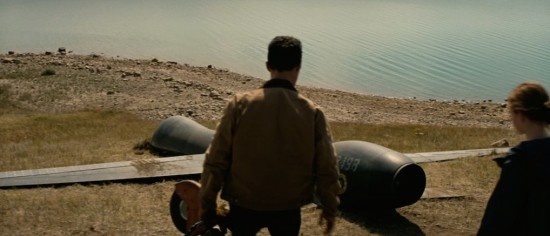 1. Cooper And His Son Murph Find a Fallen Space Probe
1. Cooper And His Son Murph Find a Fallen Space Probe
The script originally followed 30-year-old Cooper and his two sons. Chris Nolan, who has a daughter (whom you can see on screen in The Prestige), decided to change the sex of Murph from male to female. Not much else about the character is different other than her sex — she's still in trouble at school for showing Coop's old textbooks with the uncorrected Apollo mission "nonsense".
The sad minor league-looking New York Yankees game is interrupted not by the dust storm, but instead by a bright blue streak in the sky. A satellite falling to earth while burning up in the upper atmosphere. After attending Murph's parent teacher meeting, Cooper is called to help a Galveston farmer who needs him to come look at her malfunctioning tractors, which were originally programed by Cooper. In Nolan's film it is Coop's tractors which are malfunctioning, directed to the gravity anomaly inside his farm house.
Riggs' tractors are attracted to a newly created crater on the edge of her property. In the crater, Cooper finds an old NASA space probe which has fallen to earth, the same one which knocked the satellite out of orbit during the game. Using his modified equipment on the black orb, Cooper is able to hack into the probe and finds an image of an ice-covered planet surrounded by stars, alongside a bunch of code he can't puzzle out.
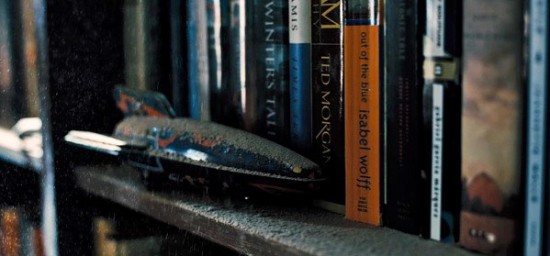 2. A Fallen Space Probe Brings Cooper To NASA, Not a Morse-Code Gravity Communicating Bookshelf Ghost
2. A Fallen Space Probe Brings Cooper To NASA, Not a Morse-Code Gravity Communicating Bookshelf Ghost
Before Cooper can scrap the probe for spare parts (he thinks NASA is completely disbanded, so there is no point in trying to return it), the probe begins emitting a loud alarm. They realize that the alarm noise stops briefly when they move the space probe in certain directions. It is quickly realized that the probe is providing directions to its home and won't stop sounding its annoying alarm until it gets there. In the morning, Coop and Murph take the probe in their small airplane (not the pick-up truck Cooper has in the final film), allowing us to see what California has become in this desperate future.
The space probe directs Cooper and Murph to a large uninhabited island in Santa Cruz. On the island they discover a underground industrial facility hidden by camouflage. They are quickly detected and detained by Amelia Brand and TARS.
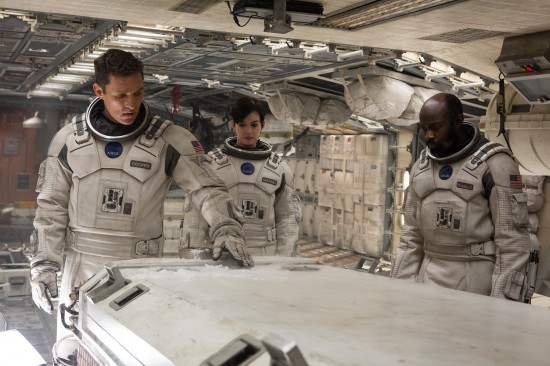 3. The Lazarus Missions Never Happened; This Is the First Manned Mission Through the Wormhole
3. The Lazarus Missions Never Happened; This Is the First Manned Mission Through the Wormhole
In the movie's storyline, a team known as the Lazarus Mission was sent through the wormhole a decade earlier to find and transmit data back to Earth about candidate planets for humans to live on. In the original screenplay, there were no Lazarus missions. Instead, a series of space probes were sent through the wormhole to gather data. Imagine a more rudimentary version of EVE from Pixar's WALL-E. The space probe that Cooper discovered was the first one to return to earth after finding good data.
Cooper helps the scientists unlock the Ice Planet data on the probe, and also warns them about a huge problem with telemetry board he notices they are using for the mission. Because of the assets he has shown the robot commander decides he could be useful to the mission. Cooper, thinking of his two sons, first turns down the offer and returns home to his farm house before changing his mind. Murph doesn't lock himself in his room, but instead tries to convince his dad to bring him with him before saying his goodbyes, giving him the watch and promising he will return.
Its also worth noting that while Professor Brand (played by Michael Caine) is in charge of the mission in the film, in the original script the Brand father/daughter duo reports to an Air Force para-rescue officer named CASE. This is a human-sized robot designed to inspire confidence, to which Professor Brand had delegated leadership duties. Also, Cooper does not have a past relationship with Professor Brand, who is a minor character in the story.
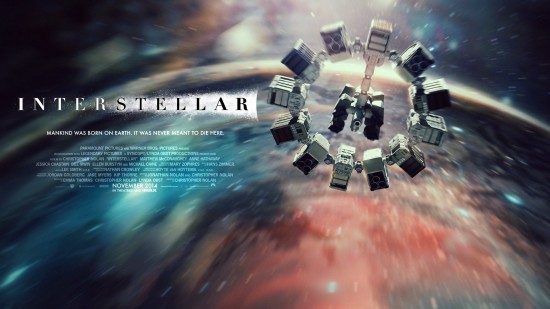 4. Sphere-Shaped Distortions Visit the Crew While Traveling Through The Tiny Wormhole
4. Sphere-Shaped Distortions Visit the Crew While Traveling Through The Tiny Wormhole
The wormhole is not a gigantic sphere or tube like it is visualized 2001-style in Nolan's film. To navigate through the wormhole in the original script, the Endurance space station contracts and configures itself into much smaller space, releasing its nuclear engines on a tether. As they travel through the quiet and nothingness of the wormhole, the crew can see images of themselves through the outer hull ("a trick of the narrow collar of space they are sinking through. Cooper smiles at himself. The experience is unnerving.").
It is here where Cooper notices a point of distortion in where it appears that a giant finger is pushing up against the hull, growing in diameter as it pushes against the hull. The distortion them begins to bend the empty space inside the ship for all of the crew members to witness — a sphere-shaped magnifying glass, like something out of a 1990's James Cameron movie (Abyss..etc). Doyle sticks his hand up, and as it gets absorbed into the sphere it appears mangled but its really just "bending the space around" his hand. It moves around the ship and appears to be examining the crew members. And then suddenly the distortions disappear as they begin to exit the wormhole.
After the exit the wormhole the Endurance finds itself pulled toward the event horizon of the black hole which was closer to the mouth than they anticipated. The pull of the black hole is greater than the power of the engines so the crew finds themselves unable to change their course. TARS locks himself into the engine compartment and sacrifices himself to detonate the engine to save the ship from being sucked into the black hole. But if they overshoot the trajectory, they might be pulled into Gargantua, the the much bigger black hole near by. This is TARS fate. Once through the wormhole, they discover all of the other probes are found to be clustered in one spot on the ice planet, but why?
Hit the jump to learn about the shocking LOST style twist not featured in the finished movie.
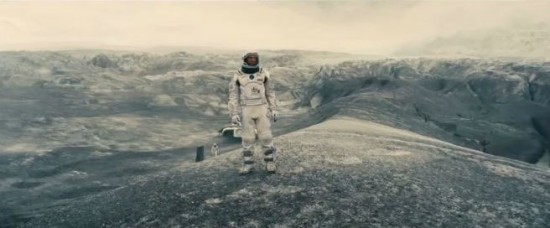 5. The Mission Only Travels To One Planet: The Ice Planet
5. The Mission Only Travels To One Planet: The Ice Planet
The mission plan is to go through the wormhole to the other galaxy. Once there, use the ship's trajectory to slingshot around a small black hole named Pantagruel, a journey that will take a few days but will be the equivalent of about five earth years, to reach the ice planet they learned about from the space probe. NASA hopes to find a place to restart human life on the planet, which has very thin nitrogen-based atmosphere, which has a surface of ninety percent frozen water, ten percent rock and lots of pockets of oxygen below.
You might be shocked to learn that the original story only visits one planet, the ice planet that was indicated in the probe. We don't see or hear about any of the other planets featured in the film. The Endurance parks in orbit a few hundred kilometers above the surface of the ice planet, and the crew must navigate a landing module through hundreds of tiny moons hurtling around the planet at high speeds.
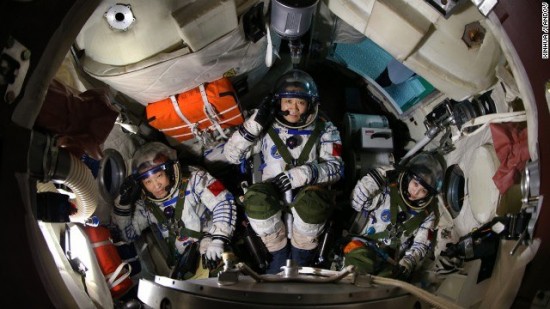 6. You Won't Believe What They Find On The Ice Planet: The Chinese?!
6. You Won't Believe What They Find On The Ice Planet: The Chinese?!
In a Lost-style twist, they discover a metal door hidden underneath the ice. What?! And steps away they find a bright patch of red fabric below the ice — the flag of the People's Republic of China. They open the door and find a dusty Chinese base camp. How did the Chinese find out about the wormhole?
They discover a half a dozen of NASA's probes locked away in an equipment locker — No wonder they never returned to Earth, the Chinese must have captured them. They quickly figure out that the crew was from a Mars mission that the Chinese claimed had been destroyed on landing. But the real truth is the four person 15 robot mission had landed on the ice planet 30 years ago.
Cooper finds graves for the entire human crew outside in the snow and meanwhile Roth figures out why: not only is this ice planet orbiting the back hole but also a neutron star. The black hole shields the planet's surface from it for 20 hours a day, and if they don't escape the planet in five minutes the radiation will cook them alive. With no time to return to the ship, they decide to go down a three-foot wide mine shaft the Chinese crew were digging in the ice before they died. But the 150 foot deep shaft isnt enough to shield them from the X-rays, so they try to make use of a drill and a pick left behind in the shaft.
Case cracks a hole in the ice below them and they fall through the ice thousands of feet down onto the surface. The planet is actually hidden underneath a cloud-like massive layer of ice, hiding the pure oxygen atmosphere below (created by tiny organisms trapped in the ice that absorb the x-rays and emit light and oxygen to the atmosphere below).
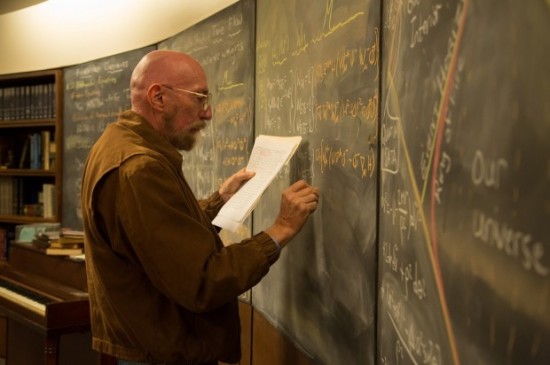 7. A Gravity Machine Is Discovered
7. A Gravity Machine Is Discovered
In the film, Professor Brand has spent his whole life supposedly trying to solve a gravity equation which would allow Earth to launch a space station saving the lives of many people on the planet. The original script never had scientists on earth trying to solve such an issue, and the secret NASA base was not built in a centrifuge space station. But thats not to say that the gravity problem wasn't solved elsewhere...
In the original screenplay, the crew eventually find a huge fortified Chinese base on the planet surface. The Chinese robots survived and built the colony to house thousands of people but since the Chinese government collapsed no one ever showed up.
According to the logs, the robots discovered evidence of another small black hole moving into this star system (too small to be seen in the initial survey) which will divert the orbit just enough that the ice planet will eventually be destroyed in Pantagruel's event horizon. A few years in the robots left the planet and went in search of a solution, returning with some kind of new technology. They returned five years later and began experiments before leaving permanently.
In the Chinese bunker, they find the laboratory containing a machine, when turned on, suddenly the gravity of the room changes and up is down, down is up and sideways is not. (This whole sequence feels like it would be visually similar to sequences in Inception, so I can see why Christopher Nolan cut this idea out of the movie.) The machine somehow adjusts gravity, and Roth theorizes they created it to maybe fire into the black hole to save the planet. Roth theorizes that once the Chinese robots realized it wasn't enough, abandoned the mission but that the technology is what could save everyone on earth — being able to control Earth's gravity could let them go anywhere. They load the code for the gravity machine onto one of the space probes and take it with them.
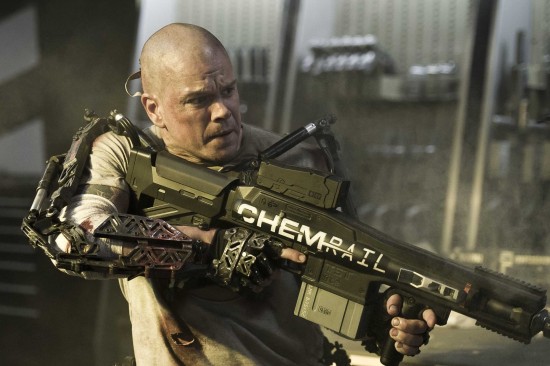 8. Evil Matt Damon Never Shows Up, But Instead We Get Aliens and Bad Robots
8. Evil Matt Damon Never Shows Up, But Instead We Get Aliens and Bad Robots
The jungle underneath the ice turns out to be comprised of fractal alien creatures who completely disassembles itself into a million different sized creatures during the day. At first glance, they seem to be trying to kill one another. The crew later discover that the aliens are a colony of creatures actually trying to combine and spreading themselves as thin as they can to absorb the maximum amount of light. Before leaving the planet, Brand takes a sample of some of the fractal life-forms to bring back with her.
The crew decides to leave the planet but camouflaged Chinese robot marines reveal themselves and won't let them leave with the technology. CASE stays behind to hold them off to allow the crew to hike up the mountain to the ice surface. They make it but their lander has been damaged, keeping them grounded.
A ridiculously convoluted solution is invented to get them out of the situation, which involves Roth using the escape rocket from the Chinese shelter to land on one of the moons orbiting the ice planet and activates the gravity device to allow the lander to take off, but also sacrificing himself in the process. CASE makes it back to the lander in time, but Brand and Cooper don't because Brand stumbles and Cooper decides to go back for her rather than make it to the ship himself. They embrace as they get pulled up into the thin atmosphere. Somehow Doyle is able to maneuver the lander beneath them and save them before they die.
Once back on the Endurance, CASE detaches the ship's last nuclear engine which causes the ship to get pulled back towards the black hole. CASE reveals.... dun dun dunnnnnn that he is not actually CASE but one of the Chinese robots (they look very similar since they are of the same robot marine model). They take him down but watch helpless as decades play out in fast forward around them as they get closer to the black hole. The ice planet gets smashed apart as it hits the event horizon, and then the wormhole gets pulled in as well. The fractal life-forms Brand took with her are now the last of their kind.
And its worth noting that while Dr. Mann (Matt Damon's character) doesn't appear in this earlier version, much of dialogue about humans being programed to survive through relationships and how the last thing humans will see before they die are their children which makes them fight for survival, is delivered by CASE during Endurance's mission to the wormhole. Its interesting that Christopher Nolan rarely did away with good bits of dialogue, instead repurposing them in other moments and other characters.
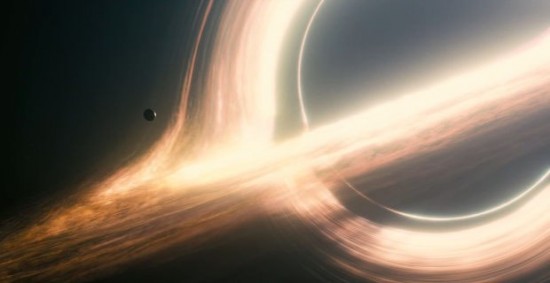 9. Everyone On Earth Dies But The Story Doesn't Cut Away To Show Whats Happening On Our Planet
9. Everyone On Earth Dies But The Story Doesn't Cut Away To Show Whats Happening On Our Planet
They get back to the Endurance to realize that because of time distortion caused by the black hole they have lost 47 earth years, and just like the movie, Cooper and Brand get to watch all the video messages from their family and friends from this huge gap of time. Through the videos we see all of Coopers family grow old and hear stories about how all of humanity is dying. And then nothing more. They theorize that probably 300 earth years have gone by and now they are probably the only three humans left in existence. Such a depressing thought... What to do now? Have space sex!
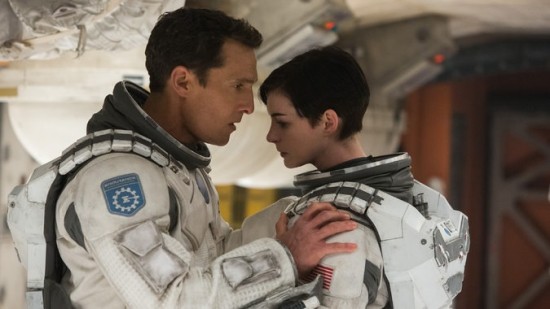 10. Cooper and Brand Fall In Love, Have Sex In Zero Gravity
10. Cooper and Brand Fall In Love, Have Sex In Zero Gravity
Christopher Nolan added most of the emotional beats in the final film and a lot of the character moments between the crew on the mission and those back home on earth. Actually, the screenplay takes place entirely from Cooper's point of view, and we don't even intercut back to earth after he leaves the planet. We never see any of the story of Murph working for NASA and Professor Brand back home, or the farming journey of Coop's other son. We do see the video messages sent to him by his family (the messages are, for the most part, remarkably the same as the final film). Cooper does send out an emergency broadcast in the last minutes before getting sucked into the black hole apologizing to Murph for not making good on his promise to come back.
But what the original screenplay loses in the emotional connection between father and daughter, it explores much more fully in the relationship that develops between Cooper and Brand. Their bond grows over the adventure and by the end you actually care that they be together. After the escape from the ice planet and all hope seems to be lost, Brand and Cooper actually have sex in zero gravity — a scene where they pull off each others clothes and have sex while floating/spinning inside the ship cabin.
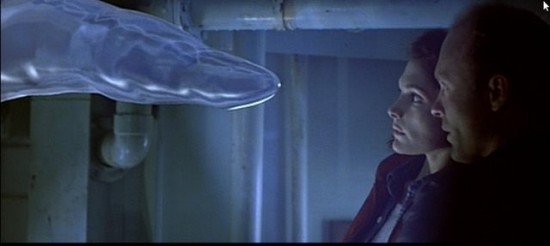 11. A Second Wormhole Is Discovered and The Distortion "Creatures" Return
11. A Second Wormhole Is Discovered and The Distortion "Creatures" Return
Coordinates found in the Chinese crew's logs point them to a second wormhole close to the black hole that they were unaware of. They are able to make adjustments and hit the second wormhole before the black hole destroys them. But now they find themselves stuck in the wormhole, nothing but whiteness everywhere for days.
They eventually encounter those orb distortions, possibly creatures that can only interact using gravity (a concept used in a much different way in Nolan's film). The things propel the crew through the cabin in what is described as a magical moment. Brand finds a way to communicate with them though patterns using ball bearings. The beings somehow guide the ship towards an opening...
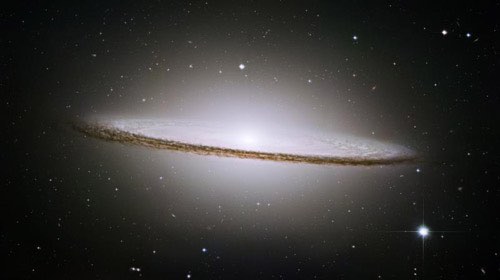 12. The Ship Finds a Space Station Built Outside of Space and Time
12. The Ship Finds a Space Station Built Outside of Space and Time
The ship then moves towards an opening, leading to the view of the entire universe compressed into a flattened disc — it is implied that they are now outside of space and time, looking from some kind of fifth dimension. The ship then glides town a massive space station overlooking it all. They dock and find TARS who explains that he orbited the black hole a bunch of times before hitting the second wormhole. From there he drifted to this space station, which is what the Chinese were protecting.
On the space station, they have used the code from the gravity machine to come up with a solution to allow all of humanity to escape in massive circular ships. Not only that but they realize that the Chinese robots were mapping the millions of wormholes which connect to virtually every planetary system in the universe, including a thousand hidden in Earth's own galaxy. But the robots were only looking for one specific wormhole... and they found it.
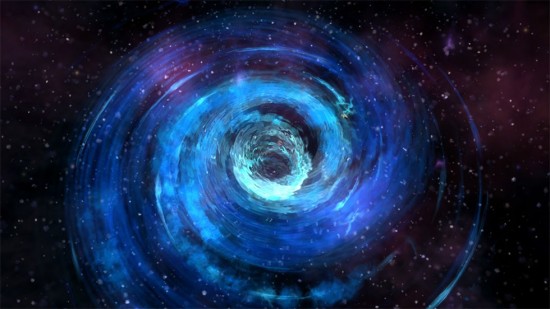 13. A Time Traveling Wormhole is Discovered
13. A Time Traveling Wormhole is Discovered
The Chinese robots found a wormhole that goes back to earth but also to a different time, just a few years after they had left. But its unclear if the Chinese made it back, so Cooper decides it is now their mission to replicate their journey and get back to Earth.
Brand is skeptical because she knows that time travel isn't possible. She mentions the video messages as evidence that they won't make it back. Most scientists believe that if time travel were possible it wouldn't involve multiple timelines as in Back to the Future but one ever changing timelime — if you traveled back in time and changed it, you would already know about it. The fact that the video messages point towards them never returning to Earth is evidence to Brand that it will never actually happen.
Brand instead wants to continue exploring to try to find another place where human life could thrive, but Cooper made a promise to his son Murph that he would return, so he must try. Brand gives Cooper half of the fractal life-forms to double their chance, as a species, to survive. They kiss passionately before she takes off in the Endurance.
Cooper and Doyle go off in one of the Chinese spaceships, bringing along the code to rebuild the gravity machine which they implanted in one of the space probes they found locked up on the ice planet. It is then Cooper realizes that the probe they have with them is the same EXACT probe he found in Galveston — that additional data he initially found on the probe but was unable to reconcile was the code needed to build the gravity machine. But then Cooper realizes that while the probe makes it back, the ship and crew didn't for whatever reason. He tries to reason with Doyle that they only send the probe into the wormhole, but Doyle is not having it and locks Cooper in the lander and sends him away as he continues into the time travel wormhole.
Doyle and the ship don't make it through, but the space probe survives — This is the first time the story cuts back to the Earth point of view, following the space probe as it smashes into the satellite, lands on earth, just as it had before. At NASA, no one ever uncovers the code hidden on the probe. Muph is now in his 30's, fixing farmer's tractors with repurposed parts, just as her dad had done at his age. He decides to take Coop's old plane to the now abandoned NASA facility to scavenge parts that he desperately needs to keep going. Murph finds the place gutted, but hears the familiar chirp of the space probe in the corner.
He brings the probe home and decrypts the additional data. Ten years later, Murph has built a version of the gravity device but it doesn't work. Another ten years later and Murph's 18-year-old daughter Emily decides to tinker with it and gets it working, kind of — it blows up the barn.
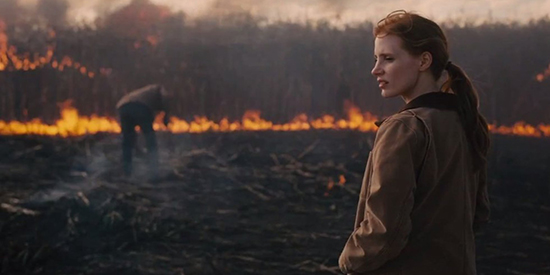 14. Cooper Arrives Back on Earth, But Humanity Is Completely Gone From the Planet
14. Cooper Arrives Back on Earth, But Humanity Is Completely Gone From the Planet
Cooper finally finds a way back to Earth, now in the year 2320, two hundred years after he left. The entire planet looks barren, mother nature has begun to reclaim it as her own and snow covers the farm land. Cooper finds the remnants of his old home, and lays there completely alone. An ice storm hits and Cooper stumbles outside trying to get back to the warmth of his ship. The case of the fractal lifeforms falls to the ground and smashes, the creatures take home in the snow causing it to glow. He sees his ship and ties to make his way to it, but is unable to get there — he will die in the arctic tundra of this now desolate planet alone.
 15. The Ending on Cooper Space Station Is the Same, But Different
15. The Ending on Cooper Space Station Is the Same, But Different
The original script ends very similar to Christopher Nolan's final film: Cooper wakes up in a hospital bed, in a building contained in a huge space station. In the script, rangers found him, and returned him to Space Station Joseph A. Cooper. In the hospital he meets an old man: Anthony Cooper Welling, our hero's great-great-grandson, who transferred to the station to meet Coop. The old man can't speak, but slowly reaches into a drawer next to his bed and hands Cooper his watch, the watch he gave Murph when he left. Its a very emotional moment.
Cooper finds himself in a room with a bureaucrat who asks him why he released the creatures on earth. It is explained that it was against regulations and that the fractal creatures could not be contained and took over the planet. Earth from space now looks like a glowing mass of ice. Cooper asks to be enrolled in the exploration fleet; the administrator explains that is very unlikely. Most of the positions are for robots, and there are a huge number of trained applicants and very few human positions. Coop asks for a spaceship to go in search of Brand, who has been missing for over 200 human years. Cooper is denied and instead shown a cornfield on the station where he can spend his days. And just like the movie, Cooper steals a ship from the space station hanger and goes in search of Brand.
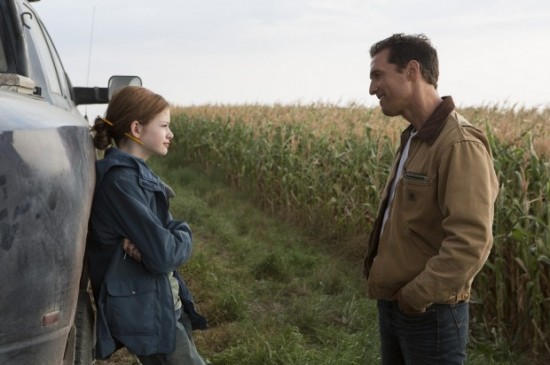 My Final Conclusions and Thoughts
My Final Conclusions and Thoughts
Steven Spielberg's film likely would have been different than this — projects evolve the longer they are in development. Is the Spielberg-developed draft better than Nolan's final film? Thats hard to say. I think both have their pluses and minuses.
I really didn't like the deus ex machina of a gravity ghost telling Cooper to go to NASA in Nolan's film. Sure, it turned out to be Cooper communicating from another dimension but it doesn't make much sense, and I also don't understand why NASA wouldn't have investigated the phenomenon that revealed their top secret base of operations. I do like how the original draft brings Cooper to NASA through the discovery of the space probe.
As much as I love Back to the Future, I love the idea of handling time travel in a scientifically accurate way with the time travel being concealed plot-wise in encrypted data on the space probe. I also liked the development of the Brand/Cooper relationship more in the original draft and was sitting on the edge of my seat when reading the LOST style twist of the Chinese remains found on the ice planet.
That said, the ending of the original draft has some great ideas but is too convoluted to work for mainstream audiences. I'm not even sure I explained what happens well enough in this article. The third act certainly needed more development. I know some critics are slamming the film for being too melodramatic but I really responded to the emotional moments between Cooper and Murph. I do think Nolan doing a simple thing as changing Murph's sex to female changes so much in the reading and relationship.
But the bottom line is that we'll never see Spielberg's version, and I'm fine with that. Christopher Nolan's Interstellar is the movie we have, and despite any nitpicks I have with the movie, I still think its a film worthy of seeing more than once on the biggest screen possible, and that is the highest compliment I can give it.
